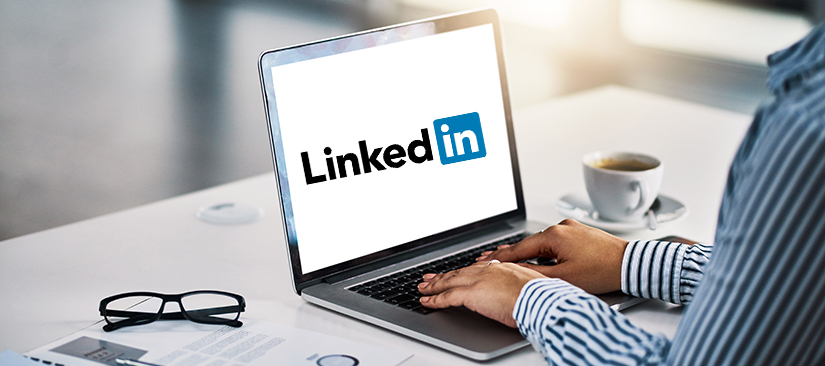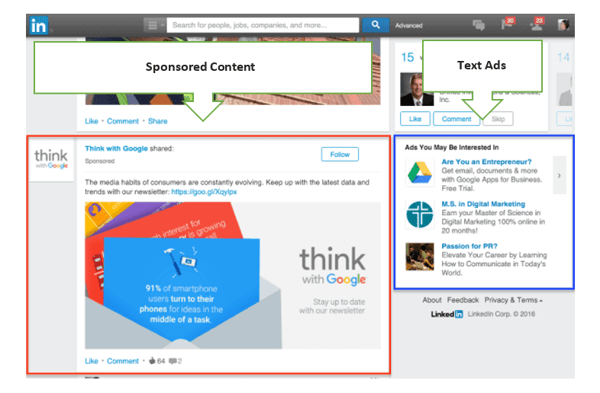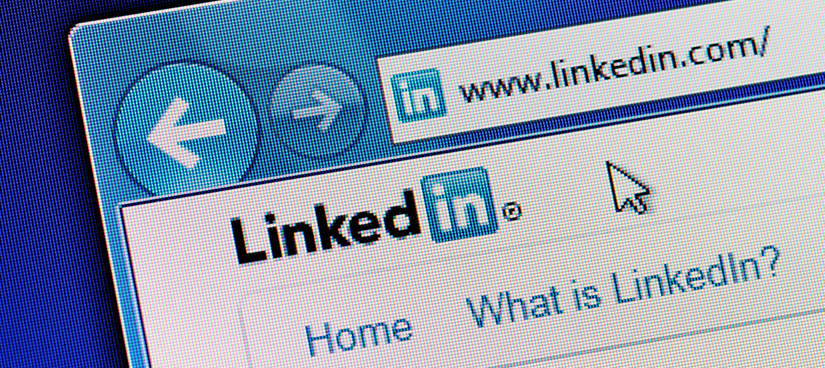How to Use LinkedIn Ads: An Expert's Advice

In the last few years, LinkedIn has come into its own. Its steady growth rate in the past decade has resulted in a complete change in how this platform is viewed, going from a (rarely visited) place to keep your resume to a lively platform where business professionals network, share ideas and advice, and build their authority.
It’s also become a hot spot for B2B advertising, thanks to its ability to target people where they work, not where they play.
AJ Wilcox is the founder of B2Linked, an agency that helps companies succeed at generating leads using LinkedIn ads. We picked his brain to help understand the different kinds of ads, how targeting works, and what you can do if your conversions are low.
What type of businesses would you say are a good fit for LinkedIn ads?
AJW: If you're doing high-value lead generation of really any kind, LinkedIn starts to make a lot of sense. By high value, I'm generally thinking like $15,000 per deal, or more. When you close a deal that's worth $15,000, that makes it worthwhile to devote enough budget to play with the ad options, launch tests. That's generally where we start.
Most ads are business-to-business, but there are some B2C aspects to it that can work for the right type of industry or company. White-collar recruiting is also big and works amazingly well on this platform. There are also higher education ads, like MBA programs looking to recruit. Those are the three areas that we found to thrive using LinkedIn ads.
What are the different types of LinkedIn ads that people would have to choose from?
AJW: There are four ad types, and when I look at them, my mind is immediately trying to find what is going to be the lowest-cost way to drive my objectives at scale.
Generally, the one that makes the most sense is Sponsored Content. There are a few different flavors. We generally stick to the single image one. It's an intro text, an image, and then headline text. It's the simplest, it's the easiest to troubleshoot.
Then you've got Text Ads, which I tend to recommend next most often. They are only on desktop because they're in the right rail, and mobile doesn't have the right rail.
Then you have Sponsored InMail, which despite what LinkedIn will tell you, is LinkedIn's most expensive ad format. They’re basically a cold email, so only use them if you know the recipient would really be excited about the opportunity.
And the last ad format is Dynamic Ads. They're also over in the right rail, and I don't recommend them for anyone. They are more expensive than Sponsored Content per click, but they get clicked on very little. I don't touch them at all.

What are some of the targeting parameters that you find most useful?
AJW: The targeting is the reason why everyone likes LinkedIn ads, and it’s what makes these ads worth the cost. It's important to understand you can use that same targeting regardless of the ad type.
We like four combinations of targeting parameters to really capture everybody we’re looking for:
- Job title
- Job function + seniority
- Skills + seniority
- Group memberships + seniority
If you just target something broad like job function, it’s not useful. If we're trying to reach digital marketers using job function, the narrowest we can get is the marketing department.
So, we try to use all four if we can, and then we layer the company information on top of the role. The three company-related parameters we use are company name, company size, and company industry.
How do you deal with the problem of people who have these wacky, creative job titles now? Like “Digital Guru” or “Chief Happiness Officer”.
AJW: Great question. LinkedIn only understands about 30% of job titles for the exact reason that you just mentioned. People give them stuff in this free form field that they're not expecting.
If you were sticking only to job titles, you end up showing to only 30% of your audience, and it's super competitive because that's where everyone else is going too. And, job title targeting is like a dollar more per click than everything else.
The way you control for it is you try to find that person using other variables. Their department and seniority, for example. LinkedIn will still pick them up based off whatever keywords are in their title, and what they perceive them to be. Or, you can hit them by skills and seniority – they’ll probably list their own skills, and those tend not to have wacky names. Or you can hit them by groups and seniority and get people who you know are interested in certain industries or topics, who are also the level you want to reach.
How about narrowing down companies? You might want to target something like chartered accountancy firms but targeting by industry is simply too broad. How do you narrow things down if you don’t have company names to target?
AJW: We see this one when we try to target someone like dentists or doctors. The closest you can get with an industry is medical practices, but that is still too broad for someone selling dental equipment. So, you take that industry and then layer on skills that are dental-related skills. Try to go job title of dentist, things like that.
In your example, where it's chartered accountancy, there may be chartered accounting keywords that you can insert into skills when you select your targeting. There may be groups that your targets have joined. That's one way. The other way is going outside of LinkedIn, where you go and find a list of all the companies who are in that niche, and then you bring that list of companies over to LinkedIn, and layer it on instead of industry.
What advice would you offer to increase the chances of a higher conversion rate?
AJW: If there's a problem with conversion rates, I examine two different things. First, I'm looking at how attractive the offer is and second, I'm looking at whether the landing page is doing anything to get in their way.
You can control the second one. You can use lead gen form ads with LinkedIn and have someone fill out the form directly within the ad and skip the landing page altogether. If your conversion rate improves from doing that, you know that the problem was with your landing page – it may not have given a good explanation of the offer, or perhaps it just didn’t generate enough trust. But, if your conversion rate doesn’t change significantly, it’s probably the offer itself and simply isn’t the right offer for that audience.
Is there anything that you desperately wish B2B businesses knew about LinkedIn ads?
AJW: The biggest mistake that people make when they very first try things out is use LinkedIn's defaults when they build a campaign. There are three “gotchas” here.
The very first is a checkbox called Audience Expansion. If they check that box, it essentially allows LinkedIn to muddy the audience you’ve carefully selected with any other audiences that they want. And there’s no way to know which audience performed better – it’s just it's all mashed together. So, your offer may have been hugely popular with your targeted audience, hugely unpopular with the expanded audience, and you’ll get the false impression that your results are mediocre.
Next, when you get to bidding and budgeting, they will automatically select Automated Bidding. If you use Automated Bidding on Facebook, that tends to work well. Facebook has enough data. They know what's going on. Choose that on LinkedIn however, and they rely on machine learning to decide where you should be bidding. And, if they don't have that history, they start bidding really high.
The third mistake is to pay too much attention to suggested bidding. You might start by bidding low, and it’ll say, “Most people are bidding $8 -$15 so you should bid $9” and that’s not worth listening to. Try near the bottom of the range. If it’s truly too low, it’ll tell you.
Those three tips will help you protect yourself and make sure you’re not paying too much. And really, that’s what everybody wants: great results without having to pay too much.
Curious about other tips to marketing your business on social media? Then this Beginner's Guide to Using Social Media is for you.





